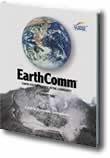Could the effects of a volcano be felt 50 kilometers away? 500 kilometers away? 5000 kilometers away? Could life on the other side of the world be effected by an eruption? Could an earthquake occur where you live? Can buildings or people survive an earthquake? Is there a common cause for volcanoes and earthquakes? Are we really moving about on Earth’s surface? How long has this motion been going on? Are there other effects of moving parts of Earth’s crust? Let us begin our study of Earth’s dynamic and interactive systems as well as some of Earth’s ever-changing history while we answer these and many other questions as we study Earth’s Dynamic Geosphere.
Themes
Through their inquiry in this module, students develop understandings of the natural hazards and complex Earth systems associated with Earth’s internal energy. The major themes addressed include the following: portions of the National Science Education Standards for Grades 9-12:
- Some hazards, such as earthquakes and volcanic eruptions are rapid and spectacular.
- Normal adjustments of Earth may be hazardous for humans.
- Natural and human-induced hazards present the need for humans to assess potential danger and risk.
- The outward transfer of Earth’s internal heat drives convection circulation in the mantle that propels the plates comprising Earth’s surface across the face of the globe.
- Earth science is used to study, predict, and mitigate natural hazards so that we can assess risks, plan wisely, and adapt to the effects of natural hazards.
- Scientists in different disciplines ask different questions, use different methods of investigation, and accept different types of evidence to support their explanations.
Volcanoes and Your Community
The chapter challenge is for students to develop a screenplay or story, set within their community, which would help audiences understand volcanoes, volcanic hazards and the Earth system. As students move through the chapter, they inquire about the hazards and benefits of volcanism, the evidence for past volcanism in their community, the connections between volcanoes and Earth systems, and the flow of matter and energy in the geosphere. By the end of the chapter, students have uncovered how and why volcanoes affect all communities on Earth.
Plate Tectonics and Your Community
This chapter deals with the history and nature of science, and in particular, about the development of understanding of the way the Earth works. In this chapter, students examine the relatively new concept of plate tectonics. Until the mid-1960s most people considered the idea that different areas of Earth’s surface moved relative to each other to be impossible. In this chapter, students will learn how and why portions of the lithosphere move, and will examine the speed of that motion. Students are expected to understand critical aspects of the flow of matter and energy within the geosphere, the nature (composition and structure) of the Earth’s interior, and how evidence, technologies, and modeling were used to develop plate tectonic theory. Students also investigate the results of the motion of plates, including volcanoes, earthquakes, mountain building, and other geologic activities.
Earthquakes and Your Community
Students must develop an earthquake risk assessment for their area and present these plans to the public as a public service message (video or audio) and in a brochure. Their presentations include concise descriptions of the basic phenomena associated with earthquakes to better prepare the public for understanding the risk assessment. Through the course of the chapter, students will investigate the cause, distribution, measurement, description, and effects of earthquakes, as well as measures used to reduce earthquake impacts. By the end of the chapter, students have uncovered the relationship between earthquakes and all communities on Earth.

